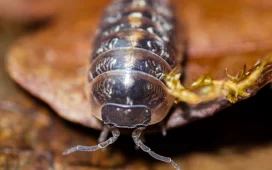Introduction
According to Matt Davies Harmony Communities, snails have been rising in popularity as pets for their easy maintenance. Most of that easy maintenance comes from creating a healthy and appropriate living environment for them. Let’s figure out the type of substrate that’s needed to create that environment.
The Substate
- Humus – Humus is the organic matter that forms in the soil when plant and animal matter break down. Only a few inches of the topsoil contain humus formation and provides nutrition to a lot of creatures including snails. This organic matter may be created from twigs and leaves that fall on the ground along with dead and decaying insects and animals on the surface. If you can use humus as a substrate for your snail tank, your pet snail would benefit a lot from the brown and black substance.
The minerals in the humus make snail shells stronger. If you want to create a snail terrarium, plants grown in the humus would grow a lot faster and contain more nutrition for feeding your snails. You can also add other organic materials like manure or compost to your humus substrate to grow plants more easily. Make sure that you don’t overdo it. Otherwise, you will poison your pet snail.
- Loam – Loam or loamy soil is made up of sand, silt, and clay in a ratio of 4:4:2. Soil is the natural habitat of most terrestrial snails. Whether you’re trying to keep a pet snail or build a snail farm, loamy soil is the usual substrate. It doesn’t get too dry, water-logged, or acidic. Moreover, the composition of loamy soil also plays a huge role in the life of a snail.
The mixture of clay, silt, and sand, makes loamy soil easy for your pet snail to dig into, provides their shells with sufficient nutrition, and helps to keep the snail’s living environment, not too dry or wet. If you have a garden, it probably has loamy soil. You can simply dig some up and place it in the snail tank. Just make sure to test the soil to check if it’s loamy and free from chemicals and pesticides. Pesticides and herbicides are harmful to snails and kill them quickly.
- Peat soils – Peat is formed from plant matter that has moderately decomposed into a black and brown substance. You’ll find a lot of peatlands covering temperate regions of North America. They are full of organic content and are perfect for burrowing or laying eggs. They are also easy to work with and hold moisture quite well. Just make sure to get peat soil from garden centers so that you’re sure they don’t contain a lot of salt that can injure your pet snail.
Conclusion
Matt Davies Harmony Communities suggests that you use one of the above-mentioned substrates for caring for your snail. If you own a snail that’s quite exotic, consult the pet store or breeder you got it from and your vet about the suitable substrate.






